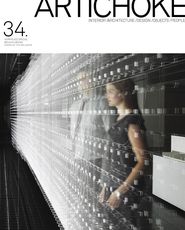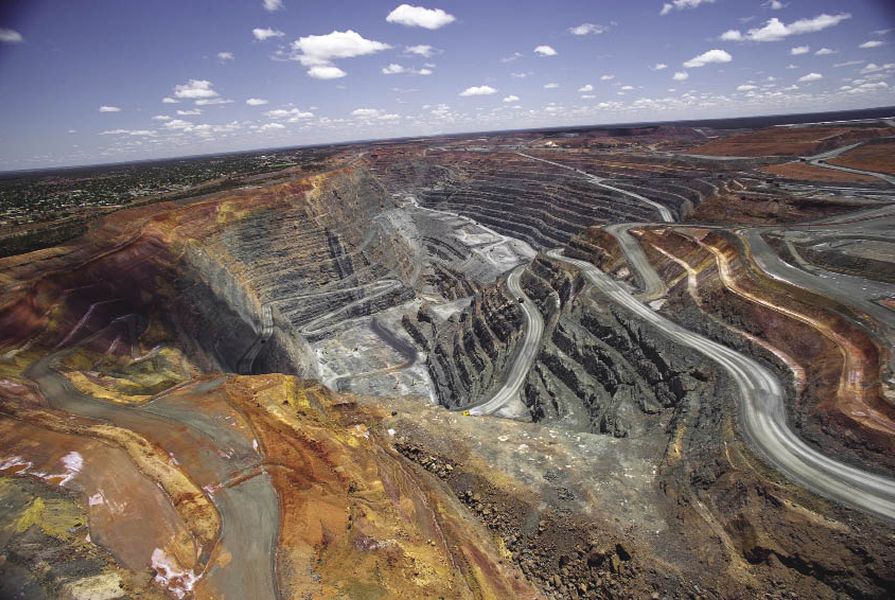Colin Martin | A few visitors to the Australian Pavilion at the 12th International Architecture Exhibition might have felt short-changed by the multiple visions of a depopulated sunburnt country on show there, given that the 2010 theme decreed by Biennale director Kazuyo Sejima was “People Meet in Architecture.” But that did not deter its excited commissioner, Janet Holmes à Court, telling guests at the Australian reception, held in the garden at the Peggy Guggenheim Collection, that “a man from Monocle” had rated the Australian installation Now and When: Australian Urbanism among the best of the national presentations.
Co-creative directors, architectural photographer John Gollings and architect Ivan Rijavec, curated a compelling and immersive installation, well populated with visitors. Anyone wearing white clothing ran the risk of resembling a disembodied spirit when bathed in the ultraviolet light illuminating the pavilion’s two “theatres.” Everyone wore plastic 3D spectacles, conveniently suspended on cords from ceilings throughout the exhibition areas, to watch stereoscopic presentations. Clustered together, they formed slightly unsettling tableaux vivants resembling the protagonists in Nevil Shute’s post-apocalyptic novel On the Beach gathered uneasily by the bay. In fact, Melbourne was among five urban and non-urban Australian regions photographed by Gollings and included in his Now installation at the pavilion. Urban images of Melbourne, Sydney and Surfers Paradise, embossed along the continent’s south-east coast, were contrasted with two fathomless mining excavations, at Kalgoorlie and Newman, debossed into the western landmass.
When, curated by Rijavec, exhibited seventeen futuristic scenarios for Australian urban environments, as imagined from 2050 onwards, selected from 129 responses to an Australian Institute of Architects competition. Liberated from normal planning and design constraints, the architects’ entries generated novel ways of thinking about urbanism in Australia, with diverse and often strikingly beautiful results. Saturation City depicts a development of large clusters of dwellings, resembling exposed coral reefs, reimagining housing in Melbourne if Port Phillip Bay rose well above its present sea level. In contrast, the architects responsible for The Oceanic City dived underwater, creating a biomimetic city powered by hydro-turbines suspended deep into the ocean,
showing a structural resemblance to the Portuguese man-of-war jellyfish. This sequence provided the most arresting stereoscopic effects, with vast chandelier-like structures, which could have been part of the interior architecture of the Titanic, swinging out into the exhibition space.
Guests of the pavilion don 3D glasses to view the photography on display.
Image: John Gollings
Susan Freeman | The Australian Pavilion opens in sweltering heat, with collections of largely jet-lagged Australians waiting in the cul-de-sac site of the now rather tired pavilion. This is Now and When: Australian Urbanism by co-creative directors John Gollings and Ivan Rijavec.
For those of us anticipating great things, having previewed the media in Gollings’s studio, the installation surpasses expectation. The curators have retained the black interior from the previous year’s art biennale and laced the building with fluorescent orange tape, in part graphic identity but also a way-finding device. It is a three dimensional graphic that continues throughout the building and transfers to the print media. We enter at the upper level of the pavilion to experience the first component, titled Now. We are tethered to suspended 3D glasses to view the extraordinary stereoscopic aerial photography of Melbourne, Sydney and the Gold Coast shot over several months by Gollings, operating stunt-man-style from the harness of low-flying helicopters.
We are completely immersed in the cities rising up before us in glorious dusk light, revealing the complex networks of roads, lighting grids and urban matrices. These urban densities are contrasted by the lunar landscapes of West Australian mines in Kalgoorlie and Newman, similarly shot from helicopter, perhaps implying the excavations of the west funding urban extrusions on the east coast. The exhibition dissolves any misgivings we may have had about the 3D technology; it is completely convincing as the appropriate media choice.
Saturation City, by McGauran Giannini Soon (MGS), Bild + Dyskors and Material Thinking, part of When.
The lower level of the pavilion houses When - speculations of city planning in the 2050+ future, without the shackles of planning regulations. The seventeen propositions in the exhibition have been selected from 129 entries by Australian architects and have been digitally realized in 3D animations, creating a submersive show for visitors, who are further spellbound by the enveloping soundscape.
At a time when a rethink of our current urban condition is particularly pertinent, with rapidly reducing water and available ground, and Australians ready to ditch the outback image, the proposals move us far from the “mythconceptions” Rijavec refers to.
We travel through the possible to the entirely fantastic, variously stitching familiar elements of existing cities with new networks, reconfiguring our relationships with shelter and neighbouring settlements, accommodating an influx of migrating millions or relocating cities to new sites in a newly serviced desert centre.
It is a thoroughly engaging show, and clearly an extra-ordinary investment of time and talent by creators and contributors, particularly by the Gollings and FloodSlicer studios to realize the works for exhibition.
Source

Discussion
Published online: 28 Jul 2011
Words:
Colin Martin
Images:
John Gollings
Issue
Artichoke, March 2011




















